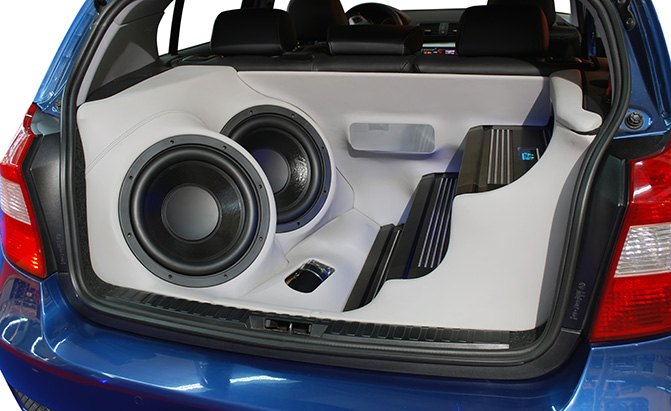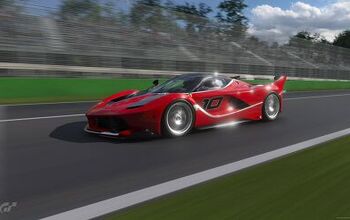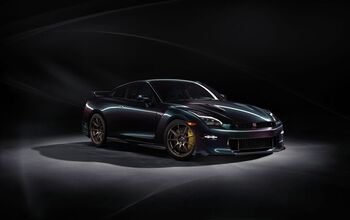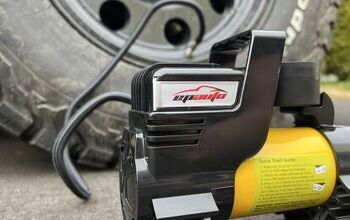Top 10 Best Car Competition Subwoofers
Subwoofers are the backbone of a competition car audio system. They provide the bone-thudding, organ-rattling bass notes that will let you impress judges and onlookers alike as you try to outdo your competitors.
No matter your budget, there is a wide range of subwoofers to meet your needs and desires. Generally speaking, for competition purposes, size and power should be among your primary considerations. However, there are many other factors you need to think about if you want a subwoofer that can handle big power, loud volume levels, and extended playing time.
Whether you’re new to car audio contests or a seasoned competitor, we’ve compiled a list of the best car competition subwoofers to get you started in your search for high performance in low frequency sound reproduction.
Table of contents
- 1. Editor’s Pick for Over 1,000 Watts: Skar EVL-Series
- 2. Editor’s Pick for Under 1,000 Watts: JBL CS1214
- 3. Big Budget Bass: JL Audio 12W7AE-3
- 4. Toro Tech Force 12S
- 5. Power Acoustik MOFO 102X
- 6. Skar Audio SDR-18 D4
- 7. Power Acoustik BAMF-122
- 8. Alphasonik VSW812
- 9. Soundstream Tarantula T5.124
- 10. Big Bass for Lower Budgets: Pyle PLPW15D
- What’s the difference between a subwoofer’s peak and continuous (RMS) power ratings?
- What do a subwoofer’s basket, spider, and surround do?
- How do you choose a competition subwoofer for your car?
- How should you install a subwoofer?
1. Editor’s Pick for Over 1,000 Watts: Skar EVL-Series
Skar brings its reputation for quality speakers to bear in the EVL-series subwoofer. Available in sizes from 6.5 to 18 inches, this speaker is built to handle 1,250 watts of continuous power, and peaks of up to 2,500 watts—ratings the manufacturer describe as “conservative.”
You can expect accurate and powerful bass from the EVL-series thanks to a high flux, double-stack ferrite motor structure. You also get a 3-inch high-temperature voice coil, which benefits from a basket design with efficient airflow and cooling to allow you to enjoy high volume levels for long periods without overheating the speaker.
If you’re after responsive, ultra-low-end frequency delivery, consider the EVL-series’ high roll foam surround and competition-grade paper cone. Skar also calls out a suspension consisting of the brand’s signature red dual-layer spider and stitched wires.
Skar rates the EVL-series subwoofer’s sensitivity at 85.1 dB, with frequency response ranging from 25 Hz to 250 Hz. All sizes are available with either dual 2-ohm or dual 4-ohm impedance ratings.
Pros | Big bass and quality construction at a reasonable price, company supplies plans for building a custom enclosure |
Cons | Adds a lot of weight to your vehicle, 2-ohm version is compatible with relatively few amplifiers |
2. Editor’s Pick for Under 1,000 Watts: JBL CS1214
This is one of the more affordable members of JBL’s subwoofer family. Rated at just 250-watts RMS and 1,000-watts maximum, the CS1214 could be a good subwoofer if you’re building your first competition sound system or want to add some volume to your existing setup.
The CS1214 is a 12-inch subwoofer that will look good in your car with its polypropylene cone and rubber surround. JBL says the cone was designed to deliver solid rigidity and internal damping to help this speaker overcome road noise when listening en route.
High volume output comes courtesy of a 90 dB sensitivity rating, bringing more bass to your ears than you might expect for a relatively low-powered subwoofer. The frequency response range is a bit narrower than in some of the other speakers we selected for this list, at 35 Hz to 200 Hz. Impedance is rated at a standard 4 ohms.
A 6-inch mounting depth makes it easy to fit this sub in your car, especially if you’re adding it to your current stereo system.
Pros | Affordable price, good performance at high volume levels |
Cons | Not suited for high-powered setups, bass could be deeper |
3. Big Budget Bass: JL Audio 12W7AE-3
If cost is no object in your search for big bass, consider the JL Audio 12W7AE-3. In no universe could this subwoofer be considered inexpensive, but this 12-inch speaker boasts continuous power handling capability of between 400 and 1,000 watts, and a 2,000-watt peak.
According to JL’s specifications, you’ll enjoy a wide frequency response range of 18 Hz to 200 Hz, so you can rest assured this speaker will give you big bass even with its average sensitivity rating of 86.2 dB.
JL builds this subwoofer using its W-cone design, which it says creates a rigid, lightweight cone that gives you accurate bass with no unwanted coloration. Also, the surround wraps around the outside of the top mounting flange to create more usable cone area, which helps move more air and give you more bass.
This subwoofer will look great in your vehicle with its polypropylene cone and polyester foam surround mounted to a silver anodized trim ring. Other design features include a plateau-reinforced spider attachment and a radially cross-drilled pole piece.
Pros | Super low frequency response, looks great |
Cons | Nearly 10-inch mounting depth, only available in one size |
4. Toro Tech Force 12S
Toro Tech may not be a household name in everyday car audio circles, but the company is well-known in competition circles, which is why we think the Force 12S subwoofer is worthy of your consideration.
If hard-hitting bass is at the top of your wish list, the Force 12S aims to deliver with its 2,000-watt continuous/4,000-watt peak power ratings. You’ll get the low-frequency response you’re after from double-stacked 350-ounce strontium ferrite magnets, a 3-inch high-temp voice coil, and a T-yoke designed for optimum cooling. The cone is made from non-pressed paper, and the oversized mirror-image spiders are of dual-poly and nomex construction.
This dual 2-ohm subwoofer has a sensitivity rating of 88 dB, so you can count on it being loud. That said, the Force 12S’s frequency response range is narrower than some of the other speakers included here, at 40 Hz to 250 Hz. With a mounting depth of a bit more than 7 inches, this speaker should be relatively straightforward to fit into an existing sound system.
Pros | Huge power, big volume |
Cons | Wiring connections must be soldered, no quick-connect option |
5. Power Acoustik MOFO 102X
Power Acoustik designed this provocatively named subwoofer with your audio competition aspirations in mind. The 10-inch model we’ve included here is rated to handle 1,200 watts of power on a continuous basis, and a peak of 2,400 watts. The voice coil is a 2.5-inch dual 2-ohm unit. The MOFO’s big power offsets a below-average sensitivity rating. Note that an available 12-inch version is rated for a bit more power.
Power Acoustik even makes a re-cone kit for the MOFO line of subwoofers so you can easily repair the speaker if you overpower it.
The anodized blue dust cap on the MOFO 102X is about more than making your system look sharp. It’s also a heat sink that helps prevent overheating when you’re pushing this sub to its limit. A vented yoke and frame, aluminum dust cap fins, and an overall high temperature tolerance also help avoid overheating and the damage it can cause.
Other traits designed to make the MOFO a valuable addition to your sound system are a spruce pulp cone, high-density foam surround, poly-cotton suspension, and stitched voice coil leads.
Pros | Louder than its modest sensitivity rating suggests, strong value for quality sound; shallow mounting depth |
Cons | Complaints that this sub overheats easily, if you use it with a high-powered system you will probably need the re-cone kit |
6. Skar Audio SDR-18 D4
If you prioritize quality over power output in a large subwoofer, the Skar Audio SDR-18 D4 is worthy of your consideration. Despite relatively modest 600-watt continuous and 1,200-watt maximum power ratings, the 18-inch model punches above its weight with a frequency response range of 18 Hz to 250 Hz. What this sub aims to prove is you don’t need excessive power to produce deep bass.
A competition-grade pressed paper cone with high-roll foam surround is driven by a 2.5-inch high-temperature dual 2-ohm copper voice coil and high flux ferrite motor. Sensitivity is rated for 86.7 dB, which is a bit below average for the speakers in this list. An airflow cooling system helps avoid overheating when you push this sub hard for competition or extended listening periods.
Pros | Surprisingly affordable given Skar Audio’s reputation, wide frequency response range |
Cons | Needs to be mounted in a sealed box for top performance, 8-inch mounting depth takes up more space than some competitors |
7. Power Acoustik BAMF-122
Here’s another amusingly named subwoofer from the folks at Power Acoustik. This 12-inch sub makes a strong first impression with its robust appearance, which is your first clue that this speaker means business.
Power Acoustik rates the BAMF-122 for a maximum of 3,500 watts, and it is built to handle 1,750 watts of continuous power from your sound system. Contributing to that power rating is an oversized motor structure; a 3-inch, 4-layer voice coil with direct connect wiring; spruce pulp cone with stitched and glued joints; a polyether foam surround; dual poly-cotton suspension; and stitched voice coil leads.
The BAMF-122’s structure is also built for the most extreme conditions your music can throw at it. There’s a 12mm vented T-yoke to improve low-frequency dynamics and keep the voice coil cool, and a non-resonant aluminum frame.
Efficiency, otherwise known as sensitivity, is rated at 85 dB, which is strictly average in this group of subwoofers. While we might ask for more efficiency in a lower-powered sub, we have no doubt the BAMF-122 is perfectly effective at converting wattage to high-volume, low-frequency output.
Pros | Big volume, clear and accurate low-frequency reproduction |
Cons | Some buyers complained of undersized wiring terminals, doesn’t play well with underpowered amplifiers |
8. Alphasonik VSW812
Design details abound on the Alphasonik VSW812 subwoofer, like the way the company’s logo appears on the bottom of the motor assembly and forms the design of the basket. It’s just too bad you won’t see those touches once the speaker is installed in your vehicle.
But maybe you’ll forget what you’re missing once you put this sub to work. Power ratings of 1,200-watts continuous and 3,600-watts peak combine with 87 dB of sensitivity to pound out deep, loud bass.
We suspect your music’s low notes will sound great through this speaker’s non-pressed paper cone, which is anchored by a fiberglass two-layer surround to help deliver a wide frequency response range of 28 Hz to 500 Hz. Cooling rings around the motor housing help prevent overheating during extended, high-volume use.
Wiring this sub into your system is a cinch thanks to 8-gauge nickel-plated terminals.
Pros | Big bass volume for the price, attractive design |
Cons | Complaints of an obvious high-frequency cutoff despite the 500 Hz response range, a little more money will get you a better all-around subwoofer |
9. Soundstream Tarantula T5.124
If you’re looking for a subwoofer that can make your skin crawl, the Tarantula T5.124 could be the one. A basic basket design contrasts with a good-looking spruce pulp cone adorned with the company’s spider logo and wordmark.
The T5.124 is built for 2,000-watt peaks and 1,000 watts of continuous power, which works with an 86 dB sensitivity rating to deliver big bass volume you’ll feel as much as hear.
A 3-inch, 4-layer voice coil accepts a variety of impedance levels, which makes it easy for you to build this member of the Tarantula family into your existing system or use it as starting point as your setup evolves.
To handle your music’s big bottom-end notes, the cone is stitched and glued to the polyether foam surround and poly-cotton suspension for extra strength, and the suspension is designed to dampen violent accelerations when the bass hits.
Pros | Enough bass to give you the chills, good value |
Cons | A power-hungry sub that requires careful matching to the right amplifier, can literally shake parts off of your vehicle if you’re not careful |
10. Big Bass for Lower Budgets: Pyle PLPW15D
In the PLPW15D, Pyle offers a powerful subwoofer that comes in a range of sizes and power handling capabilities. The idea is to give you options for adding bass and volume to your competition-ready sound system.
Our focus here is the 15-inch version of this speaker, which is rated for 1,000 watts of continuous power and a peak of 2,000 watts. That output is delivered by a 95 oz. magnet, a 2.5-inch voice coil, a non-pressed paper cone, and a treated foam surround. The cone is backed up by a black steel basket and a non-fatiguing suspension. Frequency response is especially wide, ranging from 40 Hz to 1,500 Hz.
To make your life easier, the PLPW15D can be wired to amplifiers with 4- and 8-ohm impedance, while a 92 dB sensitivity rating will satisfy your desire for big volume at an affordable price.
Pros | An affordable way to make your start in sound system competitions, wide frequency response range |
Cons | Best considered as an entry-level competition subwoofer, complaints of overheating after extended use at high volume |
What’s the difference between a subwoofer’s peak and continuous (RMS) power ratings?
A sub’s peak power rating tells you what the speaker can handle for short bursts. The continuous, or RMS, rating indicates how much power you can send to the subwoofer for long periods. Driving the sub continuously at or near its peak rating will damage it.
What do a subwoofer’s basket, spider, and surround do?
The spider is like a suspension system for your subwoofer. It helps to smooth out and control the movement of the cone and centers the voice coil. The surround is another part of your subwoofer’s suspension, and also helps to keep the cone centered in the basket, which is the metal frame to which all of your sub’s other components are attached. A good quality sub will have a rigid basket that resists resonance.
How do you choose a competition subwoofer for your car?
If your aim is to blow the other competitors out of the water, big power should be one of your first considerations. Pay special attention to the subwoofer’s RMS, or continuous, power rating, as that is the best measure of how well a sub can pound out your music’s low frequencies at high volume levels for long periods.
You should also consider a subwoofer’s sensitivity rating. The higher this number is, the less power it requires to produce a given volume.
Frequency range, measured in hertz (Hz), tells you how low a subwoofer can go. But how you mount the speaker is important too. A vented enclosure will tend to give you more volume, while a sealed box is better for low frequency reproduction. Likewise, while a larger subwoofer will generally be better at hitting your favorite low notes, a smaller unit that’s well-matched to your system and installed properly will still impress.
A sub with dual voice coils will give you more options in terms of wiring the speaker into your sound system. Also, note the subwoofer’s impedance rating, which is measured in ohms. Regardless of whether you’re buying a sub to go with your existing amplifier or vice versa, the two components should be well-matched in terms of power and impedance for optimum performance, especially if you plan to push your system to its limit in a competition setting.
How should you install a subwoofer?
You will need to place your sub in some sort of enclosure. If you’re going as much volume as possible, a vented enclosure or box is usually best. A sealed box will ensure more accurate bass reproduction, but you’ll need more power to achieve it.
We are committed to finding, researching, and recommending the best products. We earn commissions from purchases you make using the retail links in our product reviews. Learn more about how this works.
Photo credit: risteski goce / Shutterstock.com
More by Chris Chase










































Comments
Join the conversation
Where is sundown on the list should have been one of the top above skar
"Competition subwoofer"... and lists garbage that will lose EVERY and any Competition. Where is Sundown? DC Audio? Fi ? Deaf bonce? Nothing but garbage that pays for advertising on here